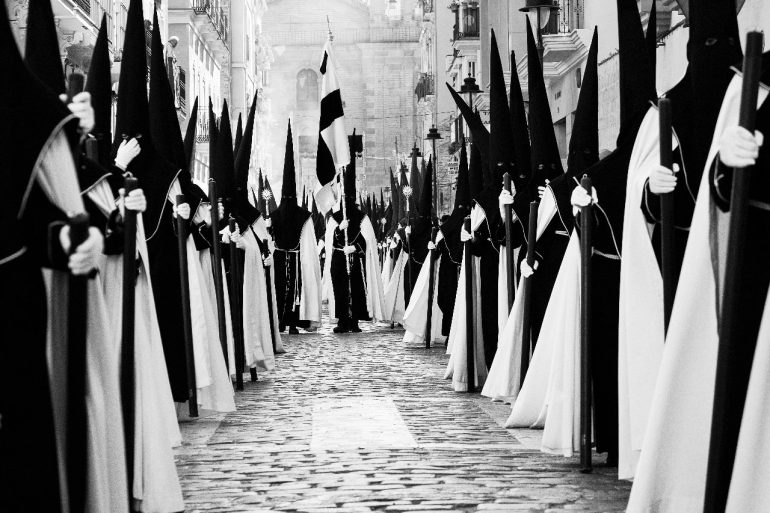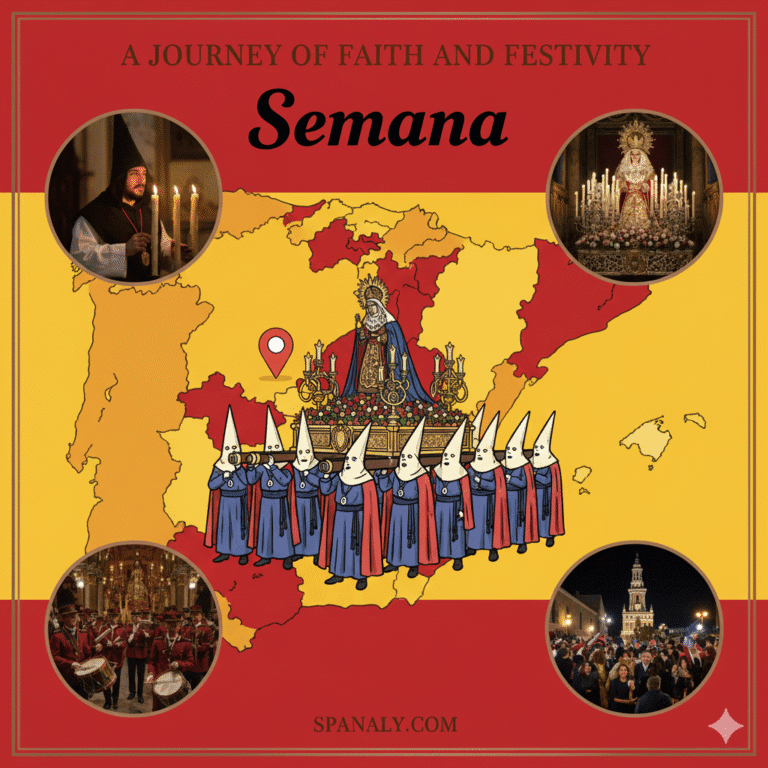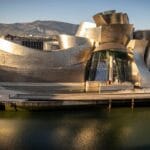Table of Contents
Toggle🕊️ Introduction
Every spring, Spain transforms into a land of faith, art, and emotion during Semana Santa — the Holy Week leading up to Easter Sunday. From the solemn streets of Seville to the candlelit processions of Valladolid, this deeply rooted tradition combines religion, music, and centuries-old artistry.
More than just a religious event, Semana Santa is a cultural and emotional journey through Spain’s soul, where every drumbeat and candle tells a story of devotion.
📜 A Brief History of Semana Santa
Semana Santa dates back to the Middle Ages, when religious brotherhoods (cofradías) organized processions to depict the Passion of Christ.
The tradition grew stronger in the 16th and 17th centuries, supported by the Catholic Church and Spanish monarchs. Each city added its own touch — from the intricate floats (pasos) of Andalusia to the austere ceremonies of Castile and León.
Today, Semana Santa is not only a time of prayer but also an extraordinary cultural expression recognized by UNESCO for its intangible heritage in several Spanish regions.

🎭 Main Highlights and Processions
Each city in Spain celebrates Semana Santa differently, but all share the same devotion and spectacle.
Seville
The most famous of all. The city hosts over 60 brotherhoods that carry magnificent floats of Christ and the Virgin Mary through narrow streets, accompanied by saetas (flamenco-style prayers sung from balconies).
Málaga
Known for its massive processions, military bands, and lifelike statues carried by hundreds of costaleros (bearers). One highlight is the release of a prisoner by royal decree — a tradition unique to Málaga.
Valladolid
Here, the tone is solemn and introspective. The processions feature centuries-old wooden sculptures crafted by Spain’s best religious artists, creating a profound sense of reflection.
Zamora
One of the oldest Semana Santa celebrations, known for its silence and candlelit night processions that fill the medieval streets with spiritual intensity.
🌍 Regional Variations Across Spain
While Andalusia is famous for its vibrant and musical processions, Castile and León offers a quieter, more contemplative style.
In Catalonia, the focus is on community and charity, while Murcia mixes solemn devotion with artistic flair.
Each region turns Semana Santa into a mirror of its own culture — joyful or solemn, colorful or austere — yet always deeply moving.
📸 What to Expect as a Visitor
If you’re planning to experience Semana Santa in Spain:
Book early: Cities like Seville and Málaga get fully booked months ahead.
Respect the processions: Silence during key moments is part of the tradition.
Photography: Allowed in most places, but avoid flash during religious moments.
Dress code: Locals often dress formally as a sign of respect.
Semana Santa isn’t a show — it’s a living expression of faith and art. As a visitor, you’ll witness Spain’s most authentic cultural event.
🎶 Music and Atmosphere
From solemn drums to haunting saetas, music is the heartbeat of Semana Santa. The combination of marching bands, candlelight, and incense creates an atmosphere that’s impossible to forget.
In Seville or Granada, a single saeta sung from a balcony can move entire crowds to tears.
🌅 Conclusion
Semana Santa is more than just a religious week — it’s a breathtaking encounter between faith, art, and tradition.
Whether you’re watching the golden processions of Seville, the solemn silence of Zamora, or the devotional marches of Málaga, you’ll feel the deep spirituality and artistic passion that define Spain.
This is not just an event — it’s an experience that connects the past with the present, and the heart of Spain with everyone who visits.



[…] spring, just two weeks after the solemn processions of Semana Santa, the city of Seville bursts into a spectacle of color, music, dance, and joy known as La Feria de […]
[…] Semana Santa (Holy Week): Traditional processions through the old town. […]